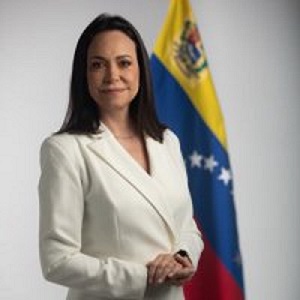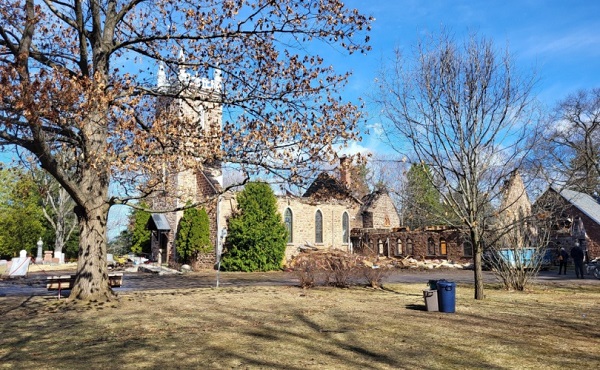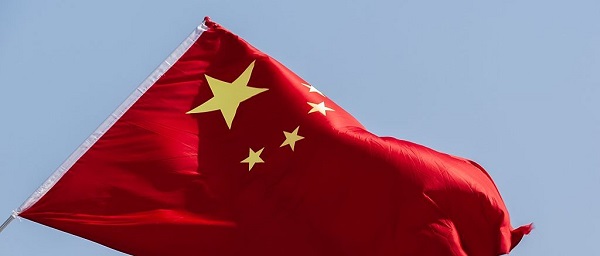International
OP-ED Trudeau’s Dangerous Pandering to Extremists Has Turned Canada Into a Safe Haven for Hate and Terror
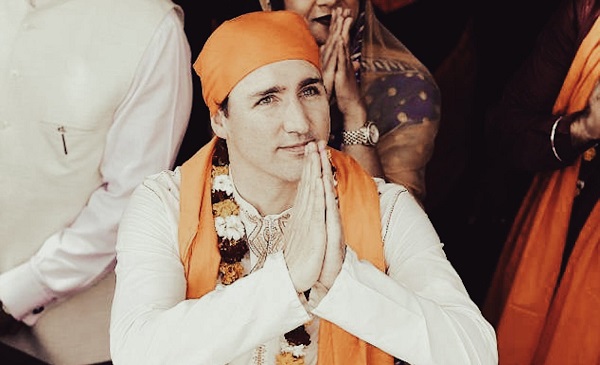
If these weren’t Khalistani activists but a group of white nationalists descending on a mosque or synagogue, Trudeau would be sprinting to the nearest camera to condemn it. Hate crimes would be filed faster than you could say “virtue signal.”
This past weekend in Brampton, Ontario, we saw a truly disturbing and shameful scene unfold. Khalistani extremists—yes, extremists—stormed a Hindu temple and reportedly assaulted its worshippers. For Hindus in Canada, who had come to this country seeking safety and freedom, this attack was a horrifying reminder that their places of worship, their cultural sanctuaries, are no longer safe. Such an assault on religious freedom should be universally condemned. Yet, the Canadian political establishment, led by Prime Minister Justin Trudeau and supported by NDP leader Jagmeet Singh, has done almost nothing but offer empty words and platitudes. It is increasingly clear that these incidents are not isolated—rather, they are a symptom of Trudeau’s reckless pandering to extremist factions within Canada’s diaspora communities.
As journalist Rupa Subramanya pointed out in her recent tweet, scenes like this should not be happening in a supposedly free and developed country like Canada. They’re scenes reminiscent of conflicts and vendettas one might see in parts of South Asia, not on the peaceful streets of Brampton. But thanks to Trudeau’s irresponsible courting of Khalistani separatist votes, this violence has been given fertile ground to grow right here in Canada.
Khalistani supporters argue they have a grievance with the Indian government. For years, they claim, India has targeted their community, cracking down on separatist leaders and activists with alleged ties to Khalistan here on Canadian soil. In the high-profile case of Hardeep Singh Nijjar, a prominent Khalistani figure in Surrey, the Trudeau government alleged that India was involved in his assassination. The RCMP, on Thanksgiving no less, all but confirmed that they believe Indian operatives were conducting activities on Canadian soil to target specific individuals. That’s a serious allegation—and it’s no surprise that it’s fueling the anger in certain parts of the Sikh community. I don’t dispute that these people have grievances, but grievances don’t justify terrorizing worshippers at a temple. There’s a clear line that’s been crossed.
Now, if this group wants to take a stand, they have every right to do so. Take your protest to the Indian consulate, gather on the steps of Vancouver’s art gallery, or march through the streets of Ottawa. That’s freedom of speech, and I’d defend their right to do it. But targeting a Hindu temple? That’s a desecration of a sacred space. What happened in Brampton wasn’t just a protest; it was an act of intimidation, even terror. And if we’re going to call a spade a spade, let’s use Canada’s own hate speech laws, which are weaponized regularly to police “wrongthink” in other cases. When violence and harassment are unleashed at a place of worship, it becomes a tool of terror—plain and simple. Even though I’m a staunch defender of free speech, we live under Canada’s hate speech regime, and it’s high time we see it applied evenly.
Here’s the kicker: if these weren’t Khalistani activists but a group of white nationalists descending on a mosque or synagogue, Trudeau would be sprinting to the nearest camera to condemn it. Hate crimes would be filed faster than you could say “virtue signal.” But in this case, we see silence and selective outrage from Canada’s so-called “defenders of diversity.” Why? Because Trudeau and Singh know they need the support of certain diasporas to maintain their coalition. They’re so tangled up in their own identity-politics web that they’ve rendered themselves incapable of taking a stand on principle.
The roots of this problem are Trudeau’s obsession with identity politics and his willingness to appease extremist voices within diaspora communities in exchange for votes. He’s aligned himself with Jagmeet Singh, whose support base includes those who sympathize with the Khalistani movement, and who has a long record of soft-pedaling the issue of Khalistani violence. For years, Trudeau and Singh have played a dangerous game, tacitly encouraging these factions to push the boundaries of what’s acceptable. Now, that same extremism has spilled into the open, right here in Canada.
Click to link to the National Post
In a National Post Article dated Nov 3 2024, Former Canadian cabinet minister Ujjal Dosanjh, a Sikh himself and a Canadian patriot who’s stood up to the radical fringes of his own community, is now sounding the alarm louder than ever about Justin Trudeau’s reckless pandering to Sikh extremism. Dosanjh is no fringe figure—he’s a former Liberal premier and a lifelong advocate for Canadian unity, even at great personal risk. He knows firsthand the damage that unchecked extremism can do to communities and to national stability. And now he’s pointing the finger directly at Trudeau.
According to Dosanjh, Trudeau’s obsession with catering to every vocal faction, no matter how extreme, has opened the floodgates for Khalistani separatists to operate openly within Canada. The same radicals who were emboldened by Canada’s political elites to support separatism are now terrorizing Hindu Canadians in their places of worship. For Dosanjh, the warning signs have been flashing red since the 1985 Air India bombing, which took the lives of 329 innocent people. But Trudeau, blinded by the need to appease every identity group, has allowed history to repeat itself.
Dosanjh argues that this “diversity at all costs” approach has led to the rise of an insidious form of intimidation that’s left peaceful Sikh Canadians too afraid to speak out against Khalistani extremism. Trudeau’s selective approach to multiculturalism—where every faction is catered to except the mainstream—has backfired spectacularly, leaving Canada vulnerable to the loudest, most radical voices. Most Sikhs in Canada don’t support the Khalistan movement, but Trudeau’s inaction has allowed this tiny, vocal minority to dominate the conversation and overshadow those who simply want to live in peace.
And Trudeau’s handling of the Hardeep Singh Nijjar affair? Dosanjh couldn’t be clearer: Trudeau’s approach was reckless and self-serving. Rather than addressing India’s concerns quietly, behind closed doors, Trudeau chose to escalate the issue on the global stage, causing a diplomatic disaster with one of Canada’s most important allies. In doing so, he’s not only jeopardized Canada-India relations but has risked the security of Canada’s Hindu, Sikh, and Indian diaspora communities. Why? Because Trudeau wanted to look “strong” to his own politically convenient voter base, using Canada’s House of Commons as his stage to grandstand.
And here’s the kicker. Dosanjh draws a stark comparison with the U.S., which recently dealt with a similar incident—an alleged plot against a Sikh separatist in American territory—through quiet diplomacy, respecting its allies without letting domestic politics interfere. Trudeau, on the other hand, saw an opportunity for grandstanding. Why? Because he knows identity politics is his only real play, and he’s willing to sacrifice both Canada’s unity and its global standing to keep his coalition intact.
Dosanjh doesn’t mince words: he sees Trudeau’s vision of Canada—a “post-national state” with no shared culture or common values—as an existential threat to the country’s future. Canada, Dosanjh argues, is not just a collection of identities; it’s a nation built on shared values, lawfulness, and mutual respect. But Trudeau, consumed by his obsession with catering to radical identity groups, is tearing the fabric of that unity apart. Instead of fostering a cohesive nation, Trudeau has allowed Canada to become a fragmented society, a breeding ground for extremism, and a place where national pride is quietly pushed aside for the benefit of loud, divisive voices.
So let’s stop pretending this is a question of free speech. What happened in Brampton was not about peaceful protest or political dissent; it was an act of hate and terrorism, plain and simple. Canada’s laws are clear, and so are the RCMP’s powers to act. Hate speech in Canada is legally defined as public incitement of hatred against any identifiable group—be it race, religion, or ethnicity—that can stir others to violence. What happened at the temple in Brampton goes beyond protest; it was targeted intimidation aimed at a religious community, nothing less than an assault on our nation’s values of tolerance and respect.
As for terrorism, Canada’s Criminal Code lays it out in black and white: any act that is politically or ideologically motivated and aimed at intimidating a public or religious group fits the bill. That’s exactly what these Khalistani extremists achieved by invading a temple, turning a space of worship into a site of fear. So let’s use the words Canada’s laws were built to define. This isn’t just disturbing the peace; it’s hate-fueled terror.
Here’s the blunt reality: the RCMP has the tools to stop this, to prosecute this violence, and to send a message that Canada will not stand by while extremists terrorize communities. And let’s not forget another essential tool—deportation. For any foreign nationals caught inciting or committing acts of violence, deportation is not only a right but a responsibility of any government worth its salt. Canada doesn’t need to tolerate foreign extremists on our soil; if they’ve come here to sow division, they need to be booted out and sent back. And if these radicals hold Canadian citizenship? Then we have prison cells ready for them. It doesn’t matter if they’re white, black, have blue hair, or green skin. If you break the law, if you cross that line from protest to violence, you belong behind bars, not on our streets.
Yet here we are with Trudeau at the helm, watching him bend over backward to avoid calling this violence out for what it is. He’s the same leader who preaches tolerance yet seems oddly selective about who deserves protection. If these were white nationalists outside a mosque or synagogue, Trudeau would be grandstanding in front of the nearest camera, denouncing it as terrorism—and he’d be right. So why the silence now? Is it because he’s too entangled in diaspora politics, relying on certain vote banks to keep his coalition intact? Or is it because he’s lost his nerve, fearful of offending the so-called “cultural sensitivities” of groups who’ve crossed the line?
The hypocrisy is staggering. Trudeau’s Canada is becoming a place where foreign grievances dictate the public peace and where divisive ideologies are allowed to take root. Pierre Poilievre and the Conservatives have a monumental task ahead. Trudeau’s game plan appears to be to break the system so badly that he can later point fingers and accuse the Conservatives of heartlessness when they try to fix it. But this is not heartlessness—it’s sanity. It’s common sense. It’s what any reasonable country would do to protect its people.
So let’s be absolutely clear: Canada is not short on people wanting to enter this country, to work hard, to respect its laws, and to build a future here. We don’t need to accommodate extremists or radicals. The way forward is simple: apply the laws we already have. Enforce our hate crime and anti-terrorism laws equally and unapologetically. If Trudeau won’t do it, then Canadians need a leader who will.
Canada needs to stand firm, prioritize its own values, and protect its citizens—not bow to the pressures of radicals who see our openness as weakness. If we want Canada to remain a place of peace, tolerance, and respect, we must enforce our laws without exception.
Subscribe to The Opposition with Dan Knight .
For the full experience, upgrade your subscription.
Daily Caller
Trump, Putin Agree On High-Stakes Meetings To Negotiate End To Ukraine War
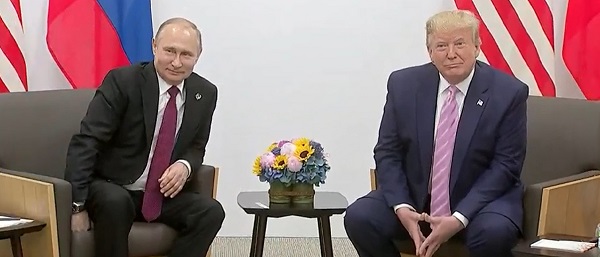

From the Daily Caller News Foundation
President Donald Trump and Russian President Vladimir Putin agreed to a pair of high-stakes meetings next week in order to negotiate an end to the Ukraine war, Trump said on Truth Social Thursday.
Trump will meet with Putin in Budapest, Hungary after an initial round of negotiations between Russian advisors and U.S. diplomats led by Secretary of State Marco Rubio next week, the president said in his post. Trump is set to meet with Ukrainian President Volodymyr Zelenskyy on Friday to discuss the war and his conversation with Putin.
“The United States’ initial meetings will be led by Secretary of State Marco Rubio, together with various other people, to be designated. A meeting location is to be determined,” Trump said in his post. “President Putin and I will then meet in an agreed upon location, Budapest, Hungary, to see if we can bring this ‘inglorious’ War, between Russia and Ukraine, to an end.”
“President Zelenskyy and I will be meeting tomorrow, in the Oval Office, where we will discuss my conversation with President Putin, and much more. I believe great progress was made with today’s telephone conversation,” he wrote.
Putin congratulated Trump on the historic deal between Hamas and Israel, and thanked First Lady Melania Trump for her work on protecting children in Ukraine, the president said in his post.
Trump said Wednesday that India will stop buying Russian oil, a deal that the administration said was fueling the war effort in Ukraine.
The meeting will mark Putin’s first visit to any European Union member state since before the invasion of Ukraine, when he attended a summit in Germany on the subject of peace.
International
Climate contrarians have the president’s ear
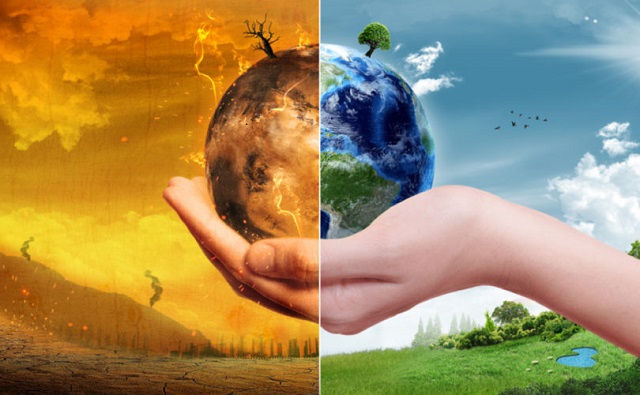
Made-in-American climate assessment challenges IPCC modelling, introducing alternative projections and recommendations that are shaping national conversations on environmental strategy and scientific credibility.
At the end of July, the U.S. Department of Energy (DOE) released a report on climate change that seemed surprisingly optimistic.
There’s good news and bad news. First, the bad news: We only have five years to live.
That’s according to U.S. Congresswoman Alexandria Ocasio-Cortez, who, you may recall, warned in January 2019: “The world is going to end in 12 years if we don’t address climate change.”
The good news is that AOC may have been exaggerating just a wee bit. And so has the Intergovernmental Panel on Climate Change (IPCC), according to the DOE’s Climate Working Group.
That’s my layman’s interpretation of what the 150-page DOE report says.
It mainly takes issue with climate models used by the IPCC. These models run too “hot” and, as a result, predict things like temperatures or extreme weather events that are not borne out by observation.
The report also notes that the IPCC appears to bury one positive consequence of more CO2 in the atmosphere: global “greening.”
They also question the assumptions that a warming planet necessarily has led to – or will lead to – increased extreme weather events.
Now, it should be noted that the report’s five authors are considered climate science heretics and contrarians, and their report has been dismissed and repudiated by 85 establishment scientists as “misleading or fundamentally incorrect.”
I would note that two of the group’s five authors — John Christy and Judith Curry — have both contributed to past IPCC assessments as lead or contributing authors. They’re not cranks – they are legit climate scientists who just happen to disagree with the “consensus” on some basic points.
The report was commissioned by U.S. Energy Secretary Chris Wright to provoke “a more thoughtful and science-based conversation about climate change and energy.”
“What I’ve found is that media coverage often distorts the science,” Wright says in a foreword to the report.
One such distortion is the repeated use of a worst-case scenario for warming (RCP8.5) that is considered so unlikely as to be “implausible,” but which produces better headlines and gets more grants than more probable, less scary scenarios for warming.
The five scientists and academics selected for the DOE’s climate working group are well-known for their climate science heterodoxy — Christy, Curry, Steven Koonin, Roy Spencer and Ross McKitrick (the sole Canadian on the team.)
Neither Wright nor the report’s authors deny the climate is changing. That would be hard to do. The earth has been warming ever since we came out of the last Ice Age.
The $122 trillion question is just how much the more recent heating has been the result of burning of fossil fuels. (It’s estimated that to hit net zero targets, we will need to spend US$3.5 trillion a year until 2050.)
“Climate change is real, and it deserves attention,” says Wright in the report. “But it is not the greatest threat facing humanity. That distinction belongs to global energy poverty.”
Pay attention, Canada. Like it or not, this is where America’s head is at right now. It is bumping climate action down the priority list and bumping up energy security and affordability, and if our own policies on environment and energy are too misaligned with America’s, we will continue to put our economy at a disadvantage.
Polling confirms there has been shift in attitude in just the last couple of years on climate and energy. On the hierarchy of fears, it appears climate change no longer tops the list.
Even Greta Thunberg took a sabbatical from climate activism to go fight the Israelites from a flotilla of diesel-burning boats in the Levant.
The climate catastrophism and alarmism that reached peak mania in 2019 may have led to both fatalism and fatigue. The DOE report goes some way to explaining where this fatigue and fatalism may be coming from.
Basically, it comes from environmentalists, politicians and the media taking worst-case scenarios from the IPCC and scaring the shit out of everyone with apocalyptic doomsaying.
Here are some highlights of the report, as I see it:
- modeling used by the IPCC may be tuned too “hot,” resulting in predicted global temperature increases that are not borne out by observable temperature data;
- IPCC assessments downplay the positive consequences of global “greening” resulting from increased amounts of CO2 in the atmosphere;
- worst-case scenarios for warming used by the IPCC are wholly improbable; and
- There is no evidence of long-term extreme weather events as a consequence of warming.

According to the DOE report, the models used by the IPCC for predicting climate sensitivity to CO2 predict temperature increases that are higher than actual observed temperature increases.
“The combination of overly sensitive models and implausible extreme scenarios for future emissions yields exaggerated projections of future warming,” the authors conclude.
When I reached McKitrick by phone, he explained what they mean by running too hot.
“There is a long-standing, almost universal pattern among the models, overstating the response to CO2 in the troposphere,” McKitrick told me. “Models warm too much. The models exhibit too much warming in response to rising CO2 and that also translates into too much surface warming.”
In more recent assessments, the IPCC has used a range of scenarios to predict how the planet might respond to increased GHGs. These scenarios – called Representative Concentration Pathways – range from RCP2.6 to RCP8.5.
RCP2.6 predicts global warming of below 2 degrees Celsius above pre-industrial temperatures. RCP8.5 predicts temperature increases of 5 degrees between 1900 and 2100 — which might indeed produce some hellish consequences.

AOC and Thunberg would be right to worry about this kind of temperature increase, if it were remotely plausible, and if nothing were being done to address GHG emissions.
The report notes that RCP8.5 came to be referred to as the no-policy baseline, or “business-as-usual” scenario. That’s the scenario in which nothing is done to try to reduce emissions.
But things are being done to reduce emissions. Efforts are being made the world over to adopt electric cars, phase out coal power, install wind and solar power, and capture and store CO2. So this worst-case scenario is probably not useful.
“The problem is, it’s routinely used in a lot of academic articles as what they call the business as usual outcome,” McKitrick said. “And most of the climate impact stories you see in the press are based on studies running RCP8.5. So you get these lurid outcomes of total devastation.
“It’s not just the IPCC. That’s a problem with the literature as a whole. Authors want to have the big, frightening splashy result, and then their article will get written up in the press.”
In 2020, Zeke Hausfather and Glen Peters wrote in Nature that the overuse of RCP8.5 as a business scenario “has resulted in a large number of misleading studies and media reporting.”
They characterized RCP8.5 as “implausible.”
“We must all …stop presenting the worst-case scenarios as the most likely one,” Hausfather and Peters wrote. “Overstating the likelihood of extreme climate impacts can make mitigation seem harder than it actually is.”
In other words, everyone reporting on climate change needs to tone things down a little. You’re scaring the children.
The DOE report criticizes the IPCC for downplaying one positive result of increased CO2 in the atmosphere — global greening.
It notes that “CO2 fertilization” had driven an increase in observed global photosynthesis by 30% since 1900, “versus 17% predicted by plant models.”
“The IPCC has minimally discussed global greening,” the authors note, but it is omitted in IPCC summary documents. These summary documents are the only ones that non-scientists (like journalists and politicians) tend to read, so it’s a bit of a buried story.
“This is a very important topic because rising CO2 levels have contributed to a massive greening of the planet,” McKitrick said. “On the agricultural front, there’s evidence that it has contributed substantially to crop productivity. And it also makes plants more tolerant to heat.
“There’s nothing controversial about those statements. They’re well established. But it’s never been pointed out in IPCC summaries.”
As for extreme weather events, modelling suggests that a warming planet should result in increased frequency and severity of things like hurricanes, droughts, and floods.
The report concludes that observational data suggests no long-term trend with respect to extreme weather events:
“Most extreme weather events in the U.S. do not show long-term trends,” the report states. “Claims of increased frequency or intensity of hurricanes, tornadoes, floods, and droughts are not supported by U.S. historical data.”
Generally, the DOE report posits a “lukewarmer” position on climate change – i.e. that the earth is warming, but that this may be more the result of natural causes, like solar activity, and less likely the result of CO2.
If this position is correct, it means the world will have spent trillions already on an energy transition that wasn’t necessary.
If this theory is wrong, then that investment in decarbonization and the energy transition is basically an insurance policy.
Nelson Bennett’s column appears weekly at Resource Works News. Contact him at [email protected].
-

 National2 days ago
National2 days agoDemocracy Watch Renews Push for Independent Prosecutor in SNC-Lavalin Case
-
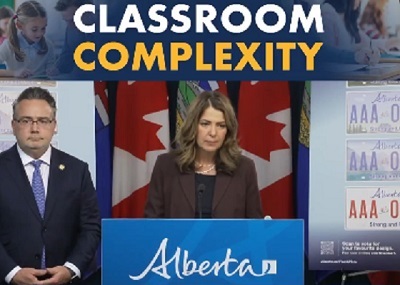
 Alberta1 day ago
Alberta1 day agoPremier Smith addresses the most important issue facing Alberta teachers: Classroom Complexity
-

 illegal immigration1 day ago
illegal immigration1 day agoLos Angeles declares a state of emergency over ICE deportations
-

 Business1 day ago
Business1 day ago‘Taxation Without Representation’: Trump Admin Battles UN Over Global Carbon Tax
-
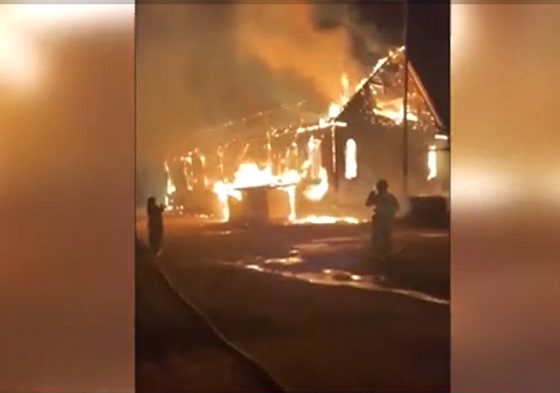
 Indigenous1 day ago
Indigenous1 day agoConstitutional lawyer calls for ‘false’ claims to end in Canadian residential schools burials
-

 Alberta2 days ago
Alberta2 days agoClick here to help choose Alberta’s new licence plate design
-

 Alberta1 day ago
Alberta1 day agoAlberta taxpayers should know how much their municipal governments spend
-
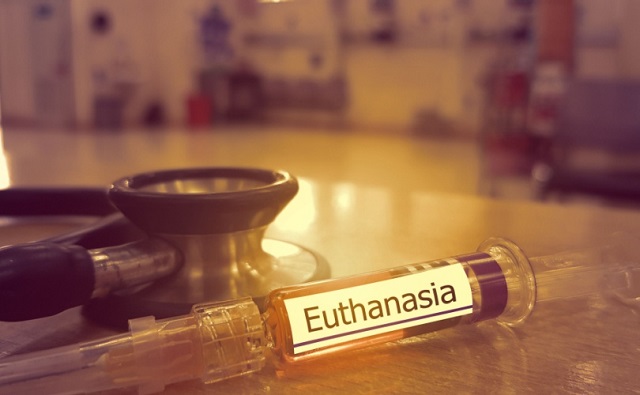
 International2 days ago
International2 days agoDaughter convinces healthy father to die in double assisted suicide with mother





